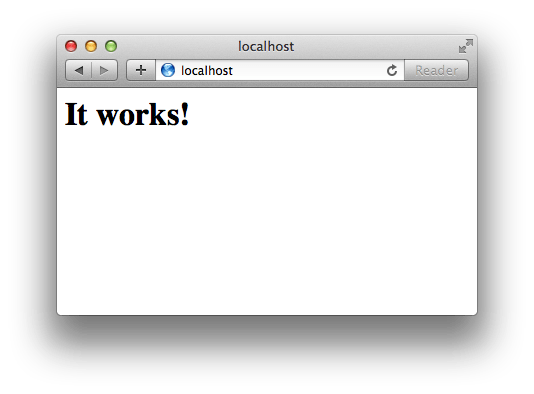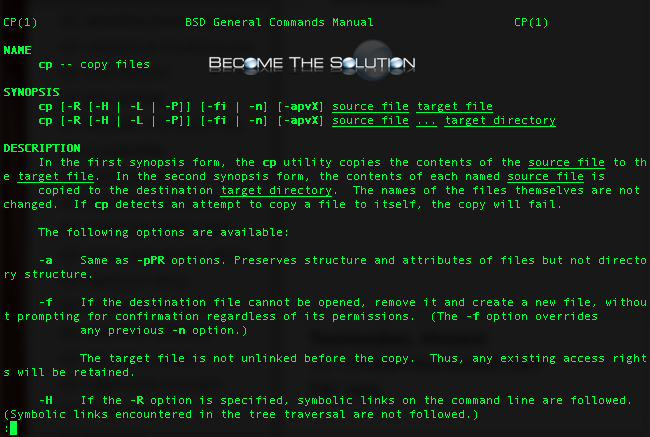
- #Mac os x terminal start apache how to
- #Mac os x terminal start apache mac osx
- #Mac os x terminal start apache install
- #Mac os x terminal start apache update
- #Mac os x terminal start apache archive
bash_profile: # MySQL_PATHĬtrl + x to exit then press “y” to save changes and enter to confirm file name. Now we need to add this path to PATH, just type: $ cd MySQL is located at: $ ls /usr/local/mysql/bin You can take a look at that list by typing: $ echo $PATH Up until this point, MySQL has not yet been added to the path, we have to add the directory where MySQL resides to that list. If you type which php in your terminal you will get back its location: $ which php The path is a list of directories that Unix uses in order to locate programs on the machine that it can run. You don’t have to log in, just click “No thanks, just start my download”.įinish installation and set it up to be running on startup by going into your system preferences bottom line and clicking on MySQL icon, you will get a default password, save it, you will need it later. Here you can configure your time zone and other settings, just type: sudo nano 99-liip-developer.ini For the CGI and CLI versions, it happens on every invocation. For the server module versions of PHP, this happens only once when the web server is started. The configuration file ( php.ini) is read when PHP starts up. Uncomment the following line (remove #): LoadModule php5_module libexec/apache2/libphp5.so Enable PHPĬd into Documents: cd /Library/WebServer/Documents/Ĭd into apache directory: cd /etc/apache2/
#Mac os x terminal start apache update
Whatever is the current version of your PHP, go ahead and update it here.
#Mac os x terminal start apache mac osx
Mac OSX 10.8 comes with PHP 5.2 by default, in order to check what version you currently have just type php -v. Then to give apache permissions to read we type sudo chmod 644 nf and press enter, lastly we type sudo apachectl restart Press “Ctrl + x” to exit, “y” to save changes and hit enter.

Type ls and check if you have a config file named after your nf username, if you can’t find one, that’s ok, then just type sudo nano nf Sudo apachectl restart Setting up root directoryĪpache’s default directory is /Library/WebServer/Documents that is where ` It work’s!` file is located at. You can start, stop, and restart your server by typing: sudo apachectl start If you see “It works!” apache is running. Verify if apache is running by accessing If you get “This site can’t be reached”, you need to start apache, just type, sudo apachectl start and press enter: To check what version of apache you have currently installed on your mac just open you terminal and type httpd -v
#Mac os x terminal start apache install
To create a local web server, all you need to do is configure Apache and install MySQL. Using CLASSPATH: /Library/Tomcat/bin/bootstrap.jar:/Library/Tomcat/bin/tomcat-juli.Apache and PHP come packaged with OS X. Using JRE_HOME: /Library/Java/JavaVirtualMachines/temurin-17.jdk/Contents/Home Using CATALINA_TMPDIR: /Library/Tomcat/temp Library/Tomcat/bin/startup.sh Using CATALINA_BASE: /Library/Tomcat Starting Tomcat by executing the provided scripts, like so:

#Mac os x terminal start apache how to
#Mac os x terminal start apache archive

Here is a trick that allows me to keep the environment variable current, even after a Java Update was installed. JAVA_HOME is an important environment variable, not just for Tomcat, and it’s important to get it right. I.e., when executing sudo you will be asked to enter your password and your Mac User account needs to be an ‘Admin’ account. Since we are creating directories, outside of your home folder, administrator right are required. Sudo is a program for Unix-like operating systems, allowing you to run programs with the security privileges of another user (normally the superuser, or root).


 0 kommentar(er)
0 kommentar(er)
